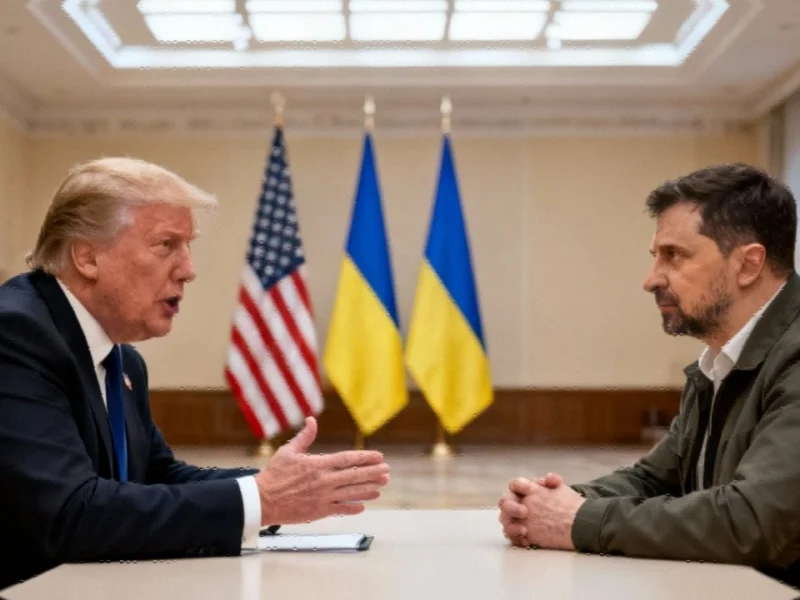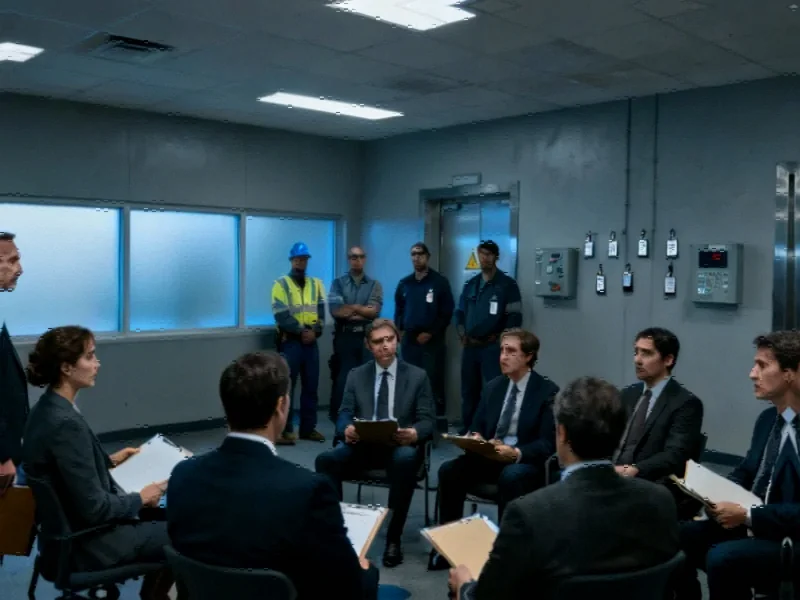Note: Featured image is for illustrative purposes only and does not represent any specific product, service, or entity mentioned in this article.
Geopolitical Recalculation in Military Support
In a significant reversal of previous indications, President Donald Trump declined to commit to providing Ukraine with Tomahawk cruise missiles during Friday’s meeting with President Volodymyr Zelenskyy. The decision marks a strategic pivot in U.S. military support as Trump emphasized concerns about escalation and maintaining American weapons stockpiles. “Tomahawks are very dangerous weapons,” Trump told reporters, highlighting the potential for increased conflict intensity. This development comes amid broader defense industry considerations regarding advanced weapons systems deployment.
Diplomatic Context and Timing Factors
The apparent policy shift occurred just one day after Trump’s telephone conversation with Russian President Vladimir Putin, during which the two leaders discussed plans for a future summit in Budapest. The timing suggests a careful diplomatic balancing act, with the U.S. administration weighing multiple international relationships simultaneously. Zelenskyy acknowledged the ongoing nature of discussions, stating that “nobody cancelled this dialogue” regarding potential Tomahawk missile transfers, indicating that negotiations may continue behind the scenes despite the public position.
Ukraine’s Counterproposal and Defense Innovation
During the meeting, Zelenskyy presented an innovative exchange proposition: Ukrainian-manufactured combat drones in return for Tomahawk missile systems. “Ukraine has thousands of drones but it doesn’t have Tomahawks,” the Ukrainian president noted, highlighting his country’s growing expertise in unmanned systems development. This proposal reflects broader technological advancements in modern warfare systems and the increasing importance of drone capabilities in contemporary conflict scenarios.
Industrial and Manufacturing Implications
The debate over Tomahawk missile transfers occurs against a backdrop of significant industrial transformation within defense manufacturing sectors. Advanced weapons systems like the Tomahawk represent the culmination of sophisticated engineering and production processes, requiring specialized industrial capabilities. The discussion about U.S. stockpile concerns underscores the complex relationship between military assistance and domestic production capacity, particularly as manufacturers navigate evolving manufacturing innovations across multiple sectors.
Broader Technology Sector Parallels
While the diplomatic discussions focused on military systems, the situation reflects patterns seen in other technology-driven industries. Just as defense contractors must balance innovation with strategic considerations, other sectors face similar challenges in managing advanced technology deployment. Recent industry developments in consumer technology demonstrate how strategic partnerships and licensing agreements can shape market dynamics, not unlike the proposed technology exchange between the U.S. and Ukraine.
Future Outlook and Strategic Considerations
The ongoing dialogue about advanced weapons systems occurs within a context of rapid technological evolution across multiple domains. As military and industrial systems become increasingly interconnected, decisions about weapons transfers involve considerations beyond immediate tactical needs. The continued evolution of market trends in computing and communications infrastructure suggests that future defense partnerships may increasingly incorporate cross-domain technological exchanges, potentially creating new opportunities for collaborative development between allied nations.
Conclusion: Navigating Complex Defense Relationships
While the immediate outcome of the Trump-Zelenskyy meeting fell short of Ukrainian expectations for Tomahawk missiles, the continued dialogue suggests potential for future cooperation. The exchange proposition involving drones highlights how nations are exploring creative solutions to address capability gaps while managing geopolitical sensitivities. As defense technologies continue to evolve, such negotiations will likely become increasingly complex, requiring careful consideration of both immediate security needs and long-term strategic relationships in an increasingly interconnected technological landscape.
This article aggregates information from publicly available sources. All trademarks and copyrights belong to their respective owners.



